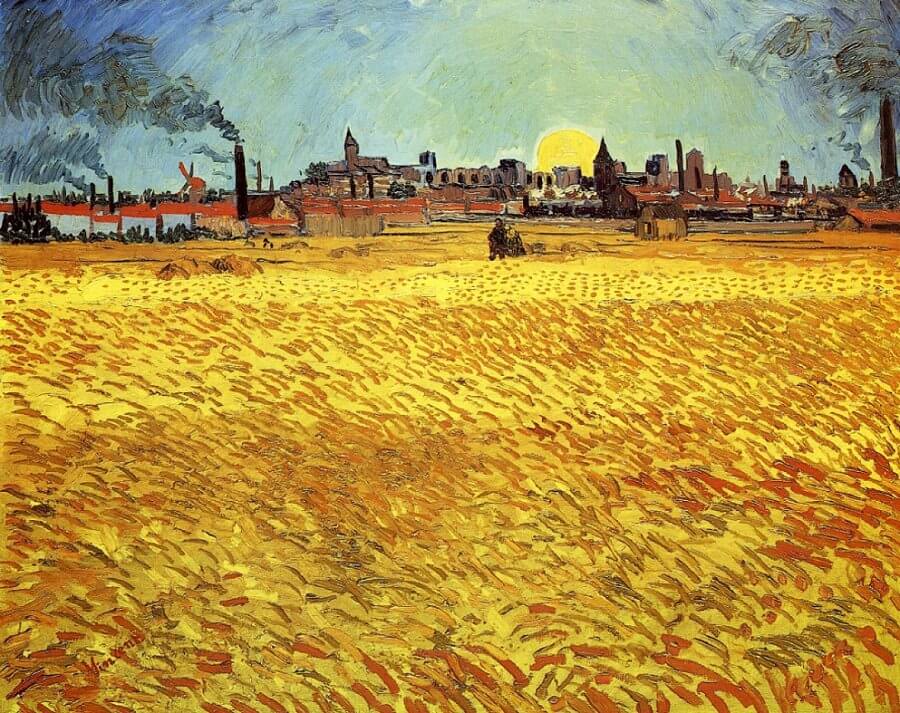Sunset at Wheat Field, 1888 by Vincent Van Gogh

Though Arles was a small and primarily agricultural-based community, the town did boast some industry, which is seen in the smoking chimneys of this painting. The development of the railway had increased the town's commerce and mode it more accessible, although it still remained essentially provincial. Seen here from across a broad expanse of restless wheat the town's dark silhouetted outline, lit by a giant moon lends it a mysterious, faintly haunting air. Wheat fields were a motif that Van Gogh used numerous times during his career, and they provided him with a perfect subject with which to expand his expressive use of short brushstrokes.
In Sunset at Wheat Field, as in most of his paintings of wheat fields, the wheat is moving and restless, defined by swift dabs of paint that contrast with the still, dark and looming presence of the town on the horizon. He had become increasingly preoccupied by the expression of feelings through symbolic elements in his work, and here his first feelings of unrest in Arles are apparent through the dark town on the skyline.




















